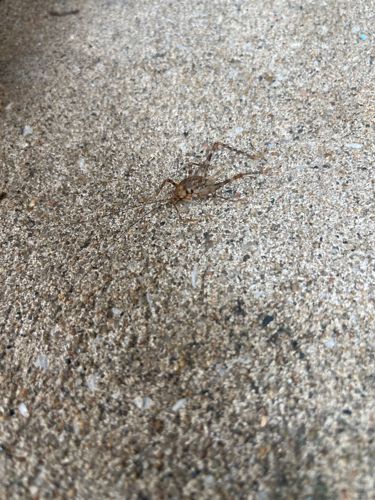Camel Cricket, Cave Cricket, Spider Cricket
Scientific Name: Various genera within Rhaphidophoridae, such as Ceuthophilus or Tachycines
Order & Family: Order: Orthoptera, Family: Rhaphidophoridae
Size: Typically 1/2 to 1 inch (1.2 to 2.5 cm) in body length, with very long antennae and legs that can make them appear larger.

Natural Habitat
Damp, dark environments such as caves, basements, cellars, crawl spaces, sheds, garages, and under logs or stones outdoors. They prefer high humidity.
Diet & Feeding
Omnivorous scavengers, feeding on organic matter, decaying plants, fungi, and sometimes other small insects. Indoors, they may consume fabrics, wood, or food scraps.
Behavior Patterns
Camel crickets are nocturnal and are often found in dark, damp environments. They are known for their strong jumping ability when startled and do not chirp like true crickets. They are generally scavengers and can forage for food in their habitat.
Risks & Benefits
Potential Risks: Primarily a nuisance pest when found indoors. They do not bite or transmit diseases but can damage fabrics, cardboard, and plants. Benefits: Outdoors, they contribute to decomposition by feeding on decaying organic matter.
Identified on: 8/11/2025